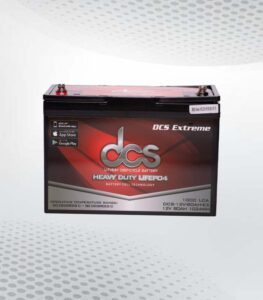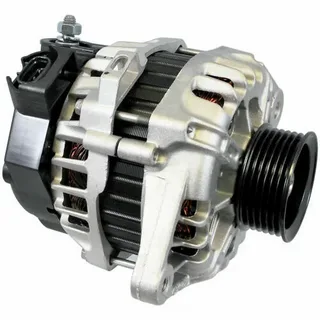Many options are available in the market when it comes to finding the correct battery for your needs. However, for those looking for a reliable and long-lasting power source, a 100ah Battery is often the top choice. But with so many brands and models to choose from, finding the perfect fit for your specific requirements can be overwhelming.
That’s why we’ve compiled this ultimate guide to choosing the right 100 ah Battery for your needs.Whether you need it for your boat, caravan, or solar power system, we’ll walk you through the essential factors to consider and provide step-by-step instructions to help you make an informed decision. So, let’s dive in and find the perfect 100 ah Battery to power up your adventures or everyday life.
Understanding 100-Ah Battery Specifications
Deciphering the specifications of a 100 ah Battery is fundamental to making an informed choice tailored to your requirements. The three critical specifications are voltage, capacity, and cycle life. Voltage is essentially the measure of the electrical potential the battery offers, a crucial aspect determining the battery’s compatibility with your device or system. A higher voltage means more power can be delivered, but it must match the application’s requirements to avoid damage.
Capacity, expressed in ampere-hours (Ah), signifies the total energy a battery can store. For a 100 ah Battery, this means it can theoretically deliver 100 amps for one hour or 10 amps for 10 hours under ideal conditions. This capacity is a key determinant of how long your device can operate before the battery requires recharging. However, actual performance can vary based on factors such as the battery’s age, temperature, and load.
Cycle life, another vital specification, indicates the number of complete charge and discharge cycles a battery can undergo before its capacity falls to a specified percentage of its original capacity. This figure is a benchmark for the battery’s longevity and depends significantly on the technology type and the usage conditions. Batteries with a higher cycle life offer more excellent long-term value, even with a higher initial cost.
Understanding these specifications is paramount in selecting a 100 ah Battery that fits your immediate needs and provides reliability and durability over its lifespan.
Different Types of 100Ah Batteries Available
Exploring the landscape of 100Ah batteries reveals a diversity in technology, each with distinct advantages and tailored for various applications. Lead-acid batteries, a traditional choice, are prized for their cost-effectiveness and reliability in backup power and automotive applications. Their significant weight and the need for regular maintenance, including water level checks for some models, are considerations for potential users.
- Lithium-ion batteries represent the forefront of battery technology, offering a higher energy density and a longer life cycle than their lead-acid counterparts. They are lighter, more efficient, and require minimal maintenance, making them an excellent choice for portable and renewable energy applications. However, these benefits come at a higher initial cost, which can deter some users.
- Absorbed Glass Mat (AGM) batteries fall within the lead-acid category but stand out for their maintenance-free design. The AGM technology allows the electrolyte to be absorbed into a fibreglass mat, making the battery spill-proof and providing a higher discharge and recharge efficiency rate. This type is well-suited for vehicles, marine applications, and systems that require a reliable power source in various conditions.
- Each battery type offers unique attributes that cater to specific demands and preferences. When selecting a 100 ah Battery, understanding the distinctions between lead-acid, lithium-ion, and AGM technologies is crucial to identifying the optimal choice that aligns with your energy requirements, operational environment, and budget constraints.
Applications and Uses of 12v 100ah Battery
A 12v 100ah Battery is a versatile power source that supports various applications across different sectors. These applications highlight the versatility and reliability of 12V 100Ah batteries in providing essential power across multiple settings. Here are five common uses:
Recreational Vehicles (RVs) and Campers
12V 100Ah batteries are ideal for powering RVs and campers. They provide reliable energy for lighting, appliances, and other onboard systems. These batteries can support off-grid adventures, ensuring comfort and convenience while exploring remote locations.
Marine Applications
Boats and marine vessels commonly use 12V 100Ah batteries to start engines and power onboard electronics. These batteries are valued for their durability and ability to withstand harsh marine environments. They provide a steady power supply for navigation systems, lights, and other essential equipment.
Solar Energy Storage
12V 100Ah batteries are widely used in solar energy systems for storing energy generated by solar panels. They allow energy storage during the day for use at night or during cloudy periods. These batteries are crucial in off-grid solar installations, providing a sustainable and independent energy source.
Backup Power for Homes and Offices
In power outages, 12V 100Ah batteries are reliable backup power sources for homes and offices. They can keep essential devices running during an emergency, such as lights, routers, and medical equipment. These batteries ensure continuous power, reducing downtime and enhancing safety.
Portable Power Solutions
12V 100Ah batteries offer portable power for camping, outdoor activities, and mobile workstations. They can be used with inverters to run small appliances, charge devices, and power tools. Their portability and high capacity make them an excellent choice for situations where grid power is unavailable.
Key Factors to Consider When Choosing a 100 Ah Battery
Selecting a 100 ah Battery requires a thoughtful evaluation of several critical aspects beyond the upfront cost and brand reputation. One of the primary considerations is the type of battery technology that best aligns with your application, whether lead-acid, lithium-ion, or AGM. Each has its own set of advantages and limitations in terms of energy density, maintenance, and lifecycle costs.
The physical dimensions and weight of the battery are crucial, especially for mobile applications like motorhomes, boats, and portable solar systems, where space may be limited and additional weight undesirable. Ensure the battery size fits the designated space and the structure can support its weight, particularly if you opt for the heavier lead-acid type.
The operational environment plays a significant role in battery choice. For instance, lithium-ion batteries perform better in a wider range of temperatures and are more suited for extreme conditions than lead-acid batteries.
Another factor is the battery’s discharge and charge cycle capabilities, which affect how well the battery will meet your energy needs over time. Assessing the anticipated depth of discharge (DoD) and ensuring the battery can handle such cycles without significant degradation is essential for long-term satisfaction.
Lastly, consider the manufacturer’s warranty and support services. A comprehensive warranty can offer peace of mind, while strong customer support can simplify maintenance and troubleshooting, enhancing the overall value of your investment in a 100 ah Battery.
How to Properly Size Your 100 Ah Battery for Your Needs
Sizing your 100 ah Battery correctly ensures that your setup meets your energy demands efficiently. Start by calculating the daily power consumption of all devices and systems you plan to run off the battery. This is achieved by listing each item, noting its wattage, and multiplying that by the number of hours it will be used daily. Summing up these figures will give you the daily watt-hour requirement.
Convert this total into ampere-hours by dividing it by the system voltage (for instance, 12V for a 12V system). This calculation provides a baseline of your minimum capacity requirement. However, factoring in inefficiencies and the recommended depth of discharge (DoD) for your chosen battery technology is essential. For example, if using a lithium-ion battery with a DoD of up to 80%, you might not need as large a capacity as a lead-acid battery, which typically has a lower recommended DoD of around 50%.
Lastly, consider future expansions or additional appliances you may add to your system. It’s often prudent to opt for a slightly higher capacity than your current calculations suggest to accommodate potential increases in power usage without necessitating an immediate battery upgrade. This approach ensures you select a 100 ah Battery that caters to your current needs and provides room for growth.
Installation Tips and Best Practices for 100 Ah Batteries
Installing your 100 ah Battery correctly maximises its performance and ensures your safety. Always adhere to the manufacturer’s instructions explicitly. Stably position the battery to avoid any movement that could lead to physical damage or short-circuiting. It’s vital to ensure the area around the battery is well-ventilated to prevent the accumulation of potentially explosive gases, particularly with lead-acid types. Use insulated tools to connect the battery, and always connect the positive (+) terminal first, followed by the negative (-) terminal, to minimise the risk of sparking.
Ensure the battery is not placed near any heat source or in direct sunlight, as extreme temperatures can adversely affect its lifespan and performance. Connect systems involving multiple batteries correctly in series or parallel configurations according to your power requirement, and use cables of appropriate thickness to handle the expected current. Inspect the connections periodically for signs of corrosion or loosening and clean them as required.
Taking these precautions during installation can significantly contribute to the safe and efficient operation of your 100 ah Battery, achieving the best possible performance and longevity from your investment.
Maintenance and Care for Prolonging Battery Life
Maintaining your 100 ah Battery in top condition extends its service life and ensures it performs optimally. It is crucial to regularly inspect the battery for any signs of wear or damage, such as cracks or bulging, which could indicate internal issues.
For lead-acid batteries, ensure the electrolyte levels are maintained by topping up with distilled water when necessary, but avoid overfilling. Keeping the terminals clean and corrosion-free is vital; applying a thin layer of petroleum jelly can help prevent corrosion build-up. For all battery types, it is essential to keep them charged and avoid letting them discharge completely.
Implementing a partial discharge cycle rather than a full discharge can significantly enhance the lifespan of lithium-ion and AGM batteries. If the battery is not in use for extended periods, it should be stored in a cool, dry place. Periodically check the charge level, recharging if it drops below 50%. Adhering to these maintenance and care practices can significantly contribute to maximising the durability and efficiency of your 100 ah Battery.
Troubleshooting Common Issues with 12 Volt 100ah Battery
Encountering issues with your 12 Volt 100ah Battery can be frustrating, but many common problems can be addressed with some basic troubleshooting steps. If the battery fails to hold a charge, ensure the charging system functions correctly and delivers the correct voltage. A malfunctioning charger can either undercharge or overcharge the battery, both harmful. For batteries that deplete rapidly, check for any connected devices or systems that are drawing power even when not actively used. Parasitic drains can often go unnoticed and significantly impact battery life.
Should you notice a decrease in performance during cold weather, it’s important to remember that battery efficiency naturally drops in lower temperatures. Keeping the battery insulated and minimising exposure to extreme cold can help mitigate this issue. In cases where the battery appears swollen or leaking, it’s critical to stop using it immediately and replace it, as these are signs of severe internal damage.
Lastly, if you experience difficulty starting your engine or powering your devices, inspect the battery terminals for corrosion or loose connections, as these can impede the flow of electricity. Cleaning the terminals and ensuring a tight connection can often restore regular operation. If these steps do not resolve the issue, consulting with a professional or considering a replacement may be necessary.
Environmental Impact and Recycling of 100Ah Batteries
The sustainability of 100Ah batteries involves conscientious disposal and recycling practices, which are imperative for mitigating their environmental footprint. Batteries contain hazardous materials and heavy metals that can cause soil and water pollution if incorrectly handled. To address this, numerous initiatives and regulations are in place globally, encouraging the recycling of batteries.
Users are urged to participate in these programmes, often facilitated by battery manufacturers, retailers, and dedicated recycling centres. By recycling old batteries, valuable materials such as lead, lithium, and electrolytes can be reclaimed and reused, reducing the demand for raw materials and decreasing the environmental impact associated with battery production.
Consumers must familiarise themselves with local recycling options and regulations, ensuring that their 100Ah batteries are disposed of in an environmentally responsible manner. Engaging in these practices contributes significantly to a circular economy, highlighting individual actions’ role in environmental conservation.
Best Charging Practices to Maximise 100ah Car Battery Efficiency
Adhering to optimal charging practices is essential to ensure your 100ah Car Battery operates at peak efficiency. Use a charger compatible with your battery type, as incorrect chargers can lead to under or overcharging, significantly reducing battery life. Performing regular but not constant charging cycles is advisable to maintain battery health. Avoid letting the battery deplete entirely before recharging; keep the charge level between 20% and 80%. This approach helps avoid the battery stress associated with deep discharge cycles.
For lithium-ion batteries, using an intelligent charger can offer significant advantages. These chargers adjust the charging rate depending on the battery’s condition and charge stage, preventing overcharging and extending the battery’s lifespan. In the case of lead-acid types, ensuring the electrolyte levels are correct before charging is crucial for safety and efficiency. Moreover, charging in a well-ventilated area is essential to dissipate any gases generated during the process.
By integrating these practices into your routine, you can significantly enhance your 100 Ah car battery’s performance and longevity, ensuring it remains a reliable power source for your vehicle.
How to Safely Transport and Store Your 100 Ah Battery
Ensuring the safe transportation and storage of your 100 Ah battery is critical to prevent any potential risks or damages. When moving the battery, it should be securely fastened in a position that prevents it from shifting or tipping over, which could lead to short circuits or leaks.
Use a sturdy, non-conductive container to minimise the risk of accidental discharge or grounding. During storage, locate a ventilated area at a consistent, moderate temperature to avoid extreme cold or heat exposure, which can degrade the battery’s performance and lifespan. Keeping the battery away from direct sunlight and moisture is also essential, as these conditions can accelerate deterioration.
Isolate the battery from items that could cause a short circuit, such as metal tools or other batteries. For extended storage periods, check the charge status periodically and maintain the charge according to the manufacturer’s recommendations to prevent the battery from entering a deep discharge state. Adhering to these guidelines ensures the battery remains in optimal condition and is ready for subsequent use.
Conclusion
In summary, selecting and managing a 100ah Battery requires careful consideration of its specifications, types, and intended uses. By understanding the essential factors highlighted in this guide, from choosing the right technology to implementing the best charging and maintenance practices, you can significantly enhance the performance and longevity of your battery. Whether for leisure, emergency power backup, or renewable energy systems, the right 100 ah Battery can provide reliable power to meet your needs. Responsible usage, maintenance, and disposal are essential to maximising benefits while minimising environmental impact.
FAQs
Q: Can I use a 100ah Battery for my solar power setup?
A: A 100 ah Battery can be an excellent choice for solar power systems, as it offers ample storage capacity for energy harvested during the day. Ensure it’s compatible with your system’s voltage and has the cycle life for optimal performance.
Q: How often should I perform maintenance on my 100 ah Battery?
A: The frequency of maintenance depends on the battery type. For example, lead-acid batteries require more frequent checks and maintenance than lithium-ion or AGM batteries.
Q: Is it necessary to fully discharge my 12v 100ah Battery before recharging?
A: No, in fact, it’s advisable to avoid total discharges, especially for lithium-ion and AGM batteries, as partial discharges and recharges can help extend the battery’s life.
Q: How can I safely dispose of my old 100 ah Battery?
A: Recycling is the most environmentally responsible way to dispose of your battery. Look for local recycling programmes or return it to the retailer or manufacturer.
| Related Business Listings |
| Directory Submissions |
| Regional Directory |




